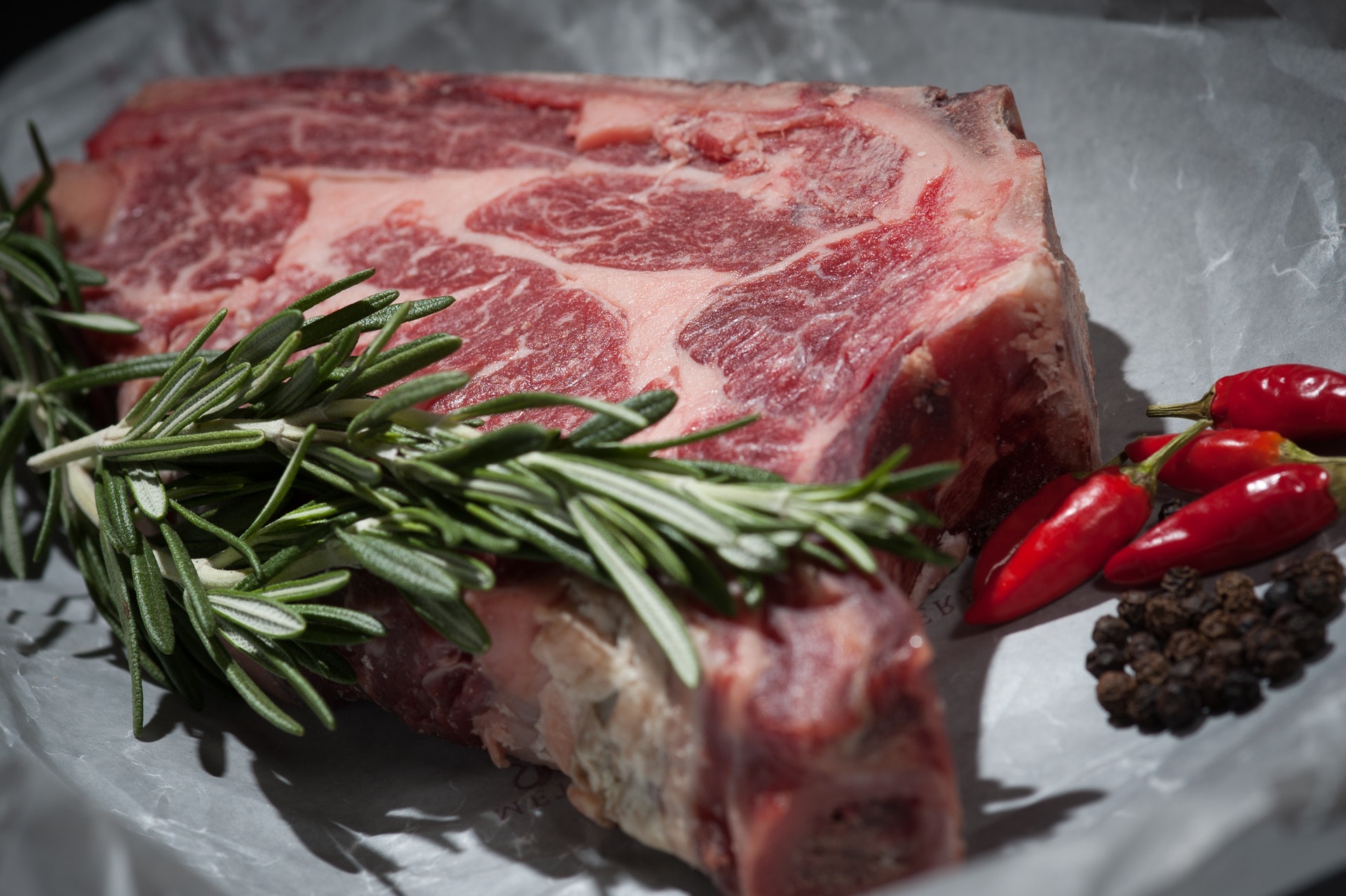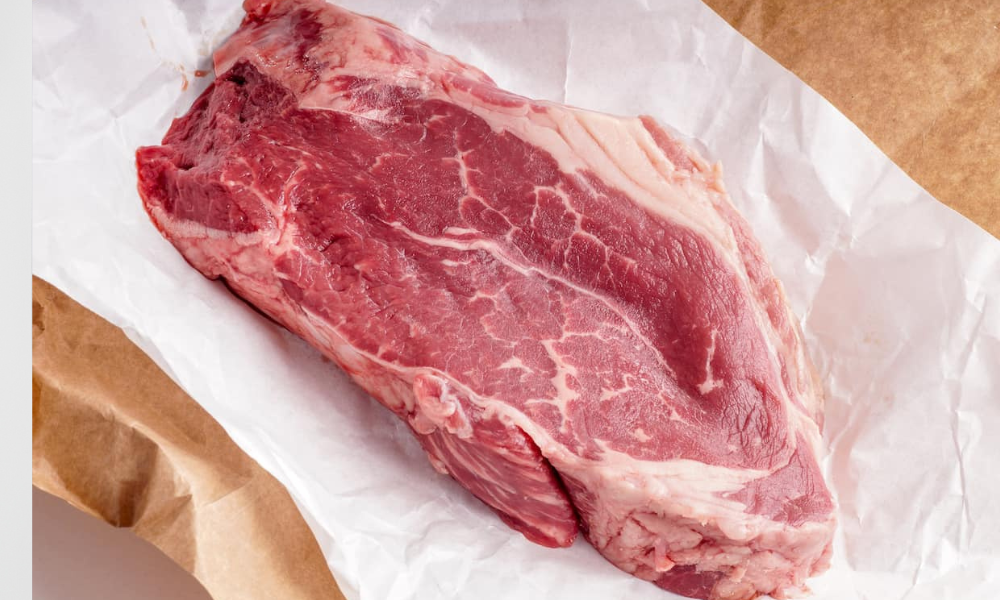Freezer Paper is the ideal storage solution for practically every type of meat. If used properly, it can extend the shelf life of your meat in the freezer and is inexpensive and simple to use.
Use the proper paper to prevent moisture and frost from getting inside the meat packaging. Butcher’s and freezer paper are the two most common varieties of paper. They are both excellent for food packaging. It has a lot of flexibility and is more frequently used to wrap meat. Furthermore, it is fairly affordable.

What is Freezer Paper?
Freezer paper is a thick paper with a paper-like substance on one side and a slick plastic or wax coating on the other.
Foods are shielded from air exposure by the plastic or wax side, which also seals in any juices that may leak from meats. The date the meat is stored is easily written on the paper side.
Though less common today, freezer paper was once used to wrap foods for freezing. This is due to more efficient substitutes. However, most of these are made of plastic and aren’t always more economical or environmentally friendly.
How to Wrap Meat in Freezer Paper?
Before Wrapping your Meat, Prepare it.
Not only will properly prepare meat freeze more effectively, but it will also make preparing meals simpler.
Before freezing meat, trim off any extra fat and remove any bones or bony bits that can pierce the freezer wrap.
Any damage to the freezer paper makes it more likely that your meat will be exposed, which might result in freezer burns.
Use Freezer Tape to Secure your Meat
Invest in some high-quality freezer tape if you plan to use freezer paper. Regular tape will be impacted by the oxygen and moisture in the freezer and may eventually open.
Freezer Tape is a specialized tape with a moisture-resistant barrier that firmly attaches to paper, plastic wrap, and aluminum foil. Safe in the microwave and freezer. Perfect for identifying and packaging frozen foods
Make Sure your Meat is Covered and that Nothing is Visible on it
Because it leads to freezer burn, the air is the adversary of frozen meat. Ensure all meat is completely coated with freezer paper to prevent freezer burn.
Freezer burn occurs when food that has been frozen is exposed to air and oxidizes, and becomes dehydrated. It typically results from food not being properly packaged in an airtight container. Even while food with freezer burn is safe to consume, the flavor frequently suffers. Citation.
Meat Should be Double-Wrapped in Freezer Paper
Now, I would suggest double-wrapping your meat in freezer paper to increase its defense against air and moisture and, as a result, lessen the chance of freezer burns.
This will provide additional protection for the meat if the paper’s outer layer is broken.
Indicate When the Item was Last Frozen
Freezer paper has a side on which you can write the sort of meat you are storing and the date it was frozen. It is not translucent.
Because you know exactly how long the meat was in the freezer, you can enjoy it at the pinnacle of its deliciousness.
Just keep in mind to periodically check the dates in your freezer. As a result of being neglected and becoming worse, a lot of meat is frequently thrown out.
Select Fresh, High-Quality Meat
My final advice is to buy fresh, high-quality meat when you can to extend the time it may be kept in the freezer by selecting meats at the peak of their freshness.
Use your senses of touch, smell, and sight when buying meat and poultry. Always check if the meat is cold, firm, dry to the touch, and odorless. Meat with brown or greyish margins should be avoided.
How to Freeze Meat?
One of the most crucial stages in preventing freezer burn is when food is exposed to air, whether freezing red meat, poultry, ground meat, bacon, or sausage, wrapping it airtight. Although original packaging for meat and poultry can be frozen, it is frequently not airtight. While freezer burn is not harmful, it can affect the flavor, texture, and look of food.
Thus, adding a second airtight layer or moving the meat or poultry to new, airtight packing is preferable, especially for longer-term preservation. If you purchased it vacuum-packed, your meat or poultry is already airtight and prepared for the freezer.
Squeeze out as much air as you can while wrapping any food, including meat and poultry, but leave a small space so the food can expand while freezing. To provide an additional layer of security, cover the food first in foil or an airtight freezer bag, then in plastic wrap or freezer paper. Another option is to use two layers of freezer bags that are airtight. Also, proper packaging shields meat and poultry from sour flavors in the freezer.
The fast freezing of meat and poultry—which requires maintaining a freezer temperature of 0°F; use an appliance thermometer to double-check—is another method for avoiding freezer burn. Consider using a secondary freezer that isn’t opened as frequently if your freezer door is frequently opened during the freezing process to prevent temperature fluctuations. To conveniently track what they are and how long they have been frozen, it is also crucial to label and date your frozen objects.
Clip off these areas before cooking if you develop freezer burn, which typically looks like grayish-brown dry spots. Even while freezer burn is not dangerous, you might be better off cutting your losses if there is a lot of it.
What are the Different Methods of Defrosting Meat?
Defrost the Refrigerator
The refrigerator is the greatest place to defrost meat and poultry, but it does take some preparation. Larger things need a day or two to thaw, while smaller cuts can do so overnight. Plan one day of defrosting for every 5 pounds of weight for large roasts and whole turkeys. Beef and pork can be refrozen after defrosting or kept in the refrigerator for three to five days. Although chicken can be cooked or refrozen after being defrosted, it can only be stored in the refrigerator for up to two days.
Defrost with Water Running
Put frozen meat or poultry in a leak-proof plastic bag and defrost it in cold water; change the water every 30 minutes to keep the temperature chilly if you’re not the planning kind and want to hasten the process. After the meat has defrosted, consider cooking it rather than storing it in the fridge.
Use the Microwave to Defrost
The fastest way to thaw meat is in the microwave, but it should be done carefully. The microwave may start cooking meat or poultry as it defrosts it unevenly. Make periodic progress checks and have it ready to cook right away.
How Much is Meat Safe to Eat?
So, should everyone become a vegetarian if eating too much meat puts us at risk for health issues? Well, maybe not always. One crucial word keeps coming up: moderation. A moderate diet of lean red meat is not harmful. But you might wonder, what does “modest” mean?
According to dietary guidelines, a maximum of 455g cooked (600–700g raw weight) lean red meat per week is needed to consume the recommended amounts of iron and zinc. If you eat it every night of the week, that works out to around one small piece (65g cooked/100g raw) or one larger part (130g cooked/200g raw) every other day.
Men, that’s who. On average, most of us consume 57g of cooked lean red meat (beef, lamb, or pork) daily, which is quite near to these guidelines. However, one group consistently exceeds the upper limit, especially when processed meats are included (bacon, ham, salami).
Men between the ages of 19 and 50 and all teenagers between the ages of 14 and 18 consume the most meat. Perhaps unsurprisingly, women and girls already consume meat at the lower end of the recommended range, which is not ideal given their higher iron needs.
What are the Side Effects of Consuming Meat?
It has long been recognized that red meat can cause several health problems. Eating too much red and processed meat is associated with one in six new instances of colon cancer (such as ham, bacon, salami, and sausages). Bowel cancer, the second-leading cause of cancer-related deaths worldwide, has the best evidence against it when consumed in excess.
Processed meats were classified as a Class 1 carcinogen by the World Health Organization in 2015. It was stated that there is substantial evidence linking processed meats to cancer. According to the Cancer Council, people who eat meat should limit their intake of red meat to three to four servings a week (no more than 700g of raw weight), and on other days, they should choose fish, chicken, and legumes. Eliminate processed meats from your diet.
Our diet contains saturated fat from processed meats and fatty red meat cuts. Our risk of heart disease and stroke increases when we consume excessive amounts of saturated fat, which is also connected to high cholesterol levels. Naturally, our heart health comes next. Based on the most recent research, the Australian Heart Foundation has published updated recommendations regarding the consumption of red meat and heart health.
Reference: Caveats for the Good and Bad of Dietary Red Meat
This argumentative review’s objective is to inform readers of the benefits of eating red meat for health and the theory that oxidative stress brought on by dietary iron and heme iron may be linked to chronic diseases, with a focus on new studies that have an impact on the paradigm. Tappel proposed that the powerful role that iron and heme iron play in initiating and promoting oxidative stress may serve as the molecular explanation for the negative effects of these chemicals. Additionally, the role of dietary antioxidants in reducing these negative consequences is emphasized. We also look at dietary adjustments that can significantly alter the potential negative effects of chronic diseases brought on by heme iron processes, such as consuming antioxidant-rich fruits and vegetables.
Conclusion
When you are purchasing freezer paper, make sure it is FDS-approved. This means it is food safe. You can find it at most supermarkets. It is available in different sizes. It comes in a roll or strips. It is usually sold by basis weight, which is the weight of 500 sheets of paper.
You can also choose premium freezer paper. This will protect the quality and taste of the meat you are freezing. It has a special coating that will keep out air and lock in moisture. It is similar to standard butcher paper but has an additional plastic layer to give it a waxy look.

